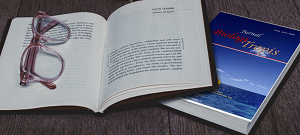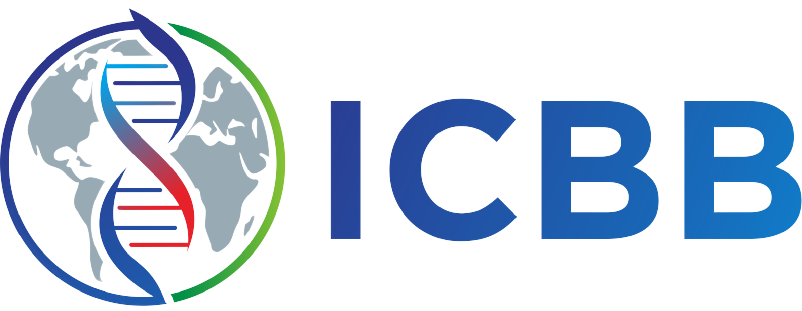Inflammatory Response of Tumor Necrosis Factor-alpha (TNF-α) in Incised Wounds of White Rats (Rattus norvegicus) Induced by Aloe vera Extract
Authors
Pauzan PauzanDOI:
10.29303/jbt.v25i2.9441Published:
2025-06-23Issue:
Vol. 25 No. 2 (2025): April-JuniArticles
Downloads
How to Cite
Downloads
Metrics
Abstract
Incised wounds are common injuries that trigger an inflammatory response, in which Tumor Necrosis Factor-alpha (TNF-α) plays a crucial role in the pathogenesis. Aloe vera has long been recognized for its wound-healing potential; however, its molecular mechanisms particularly in modulating TNF-α expression remain incompletely understood. This study aims to investigate the effect of Aloe vera extract on TNF-α expression in incised wounds of white rats. This experimental study employed a controlled group design, involving a positive control group (K+), a negative control group (K−), and a treatment group (P), each consisting of five white rats. Incised wounds were created on the dorsum of the rats, and the treatment group received topical Aloe vera extract. TNF-α expression was evaluated using immunohistochemical methods on days 3, 7, and 14 post-wounding. The treatment group that received Aloe vera extract showed a significant decrease in TNF-α expression compared to the negative control group on days 7 and 14. Aloe vera extract modulates TNF-α expression in incised wounds of white rats, indicating its potential as a therapeutic agent in wound healing through anti-inflammatory mechanisms.
References
Aulia, K. A., Reviono, R., & Yudhani, R. D. (2019). Perbedaan Kualitas Tidur Pasien Asma Terkontrol Sebagian Pada Kategori Indeks Massa Tubuh (IMT). Smart Medical Journal, 2(1), 38. https://doi.org/10.13057/smj.v2i1.27284
Ayuningtyas, A. (2020). Penggunaan Madu dan Mangga (Mangifera indica) pada Penyembuhan Luka. Journal of Health Science and Physiotherapy, 2(1), 111. https://doi.org/10.35893/jhsp.v2i1.41
Caldito, N. G. (2023). Role of tumor necrosis factor-alpha in the central nervous system: a focus on autoimmune disorders [Review of Role of tumor necrosis factor-alpha in the central nervous system: a focus on autoimmune disorders]. Frontiers in Immunology, 14. https://doi.org/10.3389/fimmu.2023.1213448
Chervet, A., Nehme, R., Decombat, C., Longechamp, L., Habanjar, O., Rousset, A., Fraisse, D., Blavignac, C., Filaire, E., Berthon, J., Delort, L., & Caldefie-Chézet, F. (2023). Exploring the Therapeutic Potential of Ampelopsis grossedentata Leaf Extract as an Anti-Inflammatory and Antioxidant Agent in Human Immune Cells. International Journal of Molecular Sciences, 25(1), 416. https://doi.org/10.3390/ijms25010416
Dons, T., & Soosairaj, S. (2018). Evaluation of wound healing effect of herbal lotion in albino rats and its antibacterial activities. Clinical Phytoscience, 4(1). https://doi.org/10.1186/s40816-018-0065-z
Englo, J., & Tjandra, O. (2020). Pengaruh pemberian ekstrak daun Berenuk (Crescentia cujete) terhadap aktivitas spesifik katalase darah dan hati tikus Sprague dawley yang diinduksi hipoksia. Tarumanagara Medical Journal, 2(2), 315. https://doi.org/10.24912/tmj.v3i1.9734
Febrianto, V., Bulan, S., & Lesmana, D. (2022). Effect of Black Cumin Extract (Nigella sativa Linn.) on Closure Time of Incision Wound in Swiss Webster Mice. E-GIGI, 10(1), 109. https://doi.org/10.35790/eg.v10i1.39156
Grabarek, B. O., Bednarczyk, M., & Mazurek, U. (2017). The characterization of tumor necrosis factor alpha (TNF-α), its role in cancerogenesis and cardiovascular system diseases and possibilities of using this cytokine as a molecular marker. Acta Universitatis Lodziensis Folia Biologica et Oecologica, 13, 1. https://doi.org/10.1515/fobio-2017-0001
Hamid, A. A. A., & Soliman, M. F. M. (2015). Effect of topical aloe vera on the process of healing of full-thickness skin burn: a histological and immunohistochemical study. Journal of Histology and Histopathology, 2(1), 3. https://doi.org/10.7243/2055-091x-2-3
Hashemi, S. A., Madani, S. A., & Abediankenari, S. (2015). The Review on Properties of Aloe Vera in Healing of Cutaneous Wounds [Review of The Review on Properties of Aloe Vera in Healing of Cutaneous Wounds]. BioMed Research International, 2015, 1. Hindawi Publishing Corporation. https://doi.org/10.1155/2015/714216
Hastuti, N., Winarsih, S., & Dwijayasa, P. M. (2018). Pengaruh Ekstrak Air Daun Kelor Terhadap Kadar Leptin dan Malondialdehyde Lemak Visceral Tikus Wistar yang Dipapar Depo Medroxyprogesterone Acetate. Journal Of Issues In Midwifery, 2(1), 38. https://doi.org/10.21776/ub.joim.2018.002.01.4
Hindrawan, Y., Susilowati, R., & Sari, M. P. (2021). Tinjauan Pustaka: Kajian in Vivo dari Obat Luka Kulit Berbahan Acalypha Indica, Aloe Vera, dan Centella Asiatica. Jurnal Kedokteran Meditek, 27(1), 74. https://doi.org/10.36452/jkdoktmeditek.v27i1.1928
Kim, J.-H., Kim, E.-Y., Chung, K. J., Lee, J., Choi, H., Chung, T., & Kim, K. (2021). Mealworm Oil (MWO) Enhances Wound Healing Potential through the Activation of Fibroblast and Endothelial Cells. Molecules, 26(4), 779. https://doi.org/10.3390/molecules26040779
Laurentino, M. R., Filho, P. A. M., Barbosa, M. C., Bandeira, I. C. J., Rocha, L. B. da S., & Gonçalves, R. P. (2014). Influence of βS-globin haplotypes hydroxyurea on tumor necrosis factor-alpha levels in sickle cell anemia. Revista Brasileira de Hematologia e Hemoterapia, 36(2), 121. https://doi.org/10.5581/1516-8484.20140028
Massoud, D., Alrashdi, B. M., Fouda, M., El‐kott, A. F., Soliman, S. A., & Abd‐Elhafeez, H. H. (2022). Aloe vera and wound healing: a brief review [Review of Aloe vera and wound healing: a brief review]. Brazilian Journal of Pharmaceutical Sciences, 58. University of São Paulo. https://doi.org/10.1590/s2175-97902022e20837
Morris, R., Mortimer, T. O., & O’Neill, K. L. (2022). Cytokines: Can Cancer Get the Message? [Review of Cytokines: Can Cancer Get the Message?]. Cancers, 14(9), 2178. Multidisciplinary Digital Publishing Institute. https://doi.org/10.3390/cancers14092178
Perkasa, B. H., Kusnadi, J., & Murtini, E. S. (2021). Optimasi Penambahan Kitosan Dan Lama Perendaman Terhadap Fisikokimia Cabai Keriting (Capsicum annuum L.) Menggunakan RSM. Jurnal Pangan Dan Agroindustri, 9(1), 13. https://doi.org/10.21776/ub.jpa.2021.009.01.2
Perliyani, H. (2021). Manifestasi Klinis dan Diagnosis COVID-19 Multisystem Inflammatory Syndrome pada Anak. Cermin Dunia Kedokteran, 48(4), 231. https://doi.org/10.55175/cdk.v48i4.1367
Takahashi, M., Umehara, Y., Yue, H., Trujillo‐Paez, J. V., Peng, G., Nguyen, H. L. T., Ikutama, R., Okumura, K., Ogawa, H., Ikeda, S., & Niyonsaba, F. (2021). The Antimicrobial Peptide Human β-Defensin-3 Accelerates Wound Healing by Promoting Angiogenesis, Cell Migration, and Proliferation Through the FGFR/JAK2/STAT3 Signaling Pathway. Frontiers in Immunology, 12. https://doi.org/10.3389/fimmu.2021.712781
Wang, Z., Fang, Q., Luo, H., Xu, G., & Wang, D. (2022). Inflammatory Microenvironment of Skin Wounds [Review of Inflammatory Microenvironment of Skin Wounds]. Frontiers in Immunology, 13. Frontiers Media. https://doi.org/10.3389/fimmu.2022.789274
Widiatmaja, D. T., Mufida, D. C., & Febianti, Z. (2021). Pengaruh Pemberian Imunisasi Intranasal Epitope Protein RrgB 255-270 Streptococcus pneumoniae Terhadap Kadar IL-4. Sriwijaya Journal Of Medicine, 4(1), 67. https://doi.org/10.32539/sjm.v4i1.155
Widyawati, R., Palgunadi, H. B. U., & Yunia, R. (2020). Effectiveness of Snakehead Fish (Channa striata) and Turmeric (Curcuma domestica) Extract towards Wound Healing in Rats (Rattus norvegicus). Veterinary Biomedical and Clinical Journal, 2(2), 39. https://doi.org/10.21776/ub.vetbioclinj.2020.002.02.6
Wilyanti, W., Kurniasari, F. N., & Harti, L. B. (2019). Pengaruh Seduhan Tepung Kulit Mangga Manalagi (Mangifera Indica L.) terhadap Kadar MDA pada Tikus. Jurnal Kedokteran Brawijaya, 30(4), 235. https://doi.org/10.21776/ub.jkb.2019.030.04.1
Zanuzzo, F. S., Zaiden, S. F., Senhorini, J. A., Marzocchi-Machado, C. M., & Urbinati, E. C. (2015). Aloe vera bathing improved physical and humoral protection in breeding stock after induced spawning in matrinxã (Brycon amazonicus). Fish & Shellfish Immunology, 45(1), 132. https://doi.org/10.1016/j.fsi.2015.02.017
License
Copyright (c) 2025 Pauzan Pauzan

This work is licensed under a Creative Commons Attribution 4.0 International License.

Jurnal Biologi Tropis is licensed under a Creative Commons Attribution 4.0 International License.
The copyright of the received article shall be assigned to the author as the owner of the paper. The intended copyright includes the right to publish the article in various forms (including reprints). The journal maintains the publishing rights to the published articles.
Authors are permitted to disseminate published articles by sharing the link/DOI of the article at the journal. Authors are allowed to use their articles for any legal purposes deemed necessary without written permission from the journal with an acknowledgment of initial publication to this journal.


























